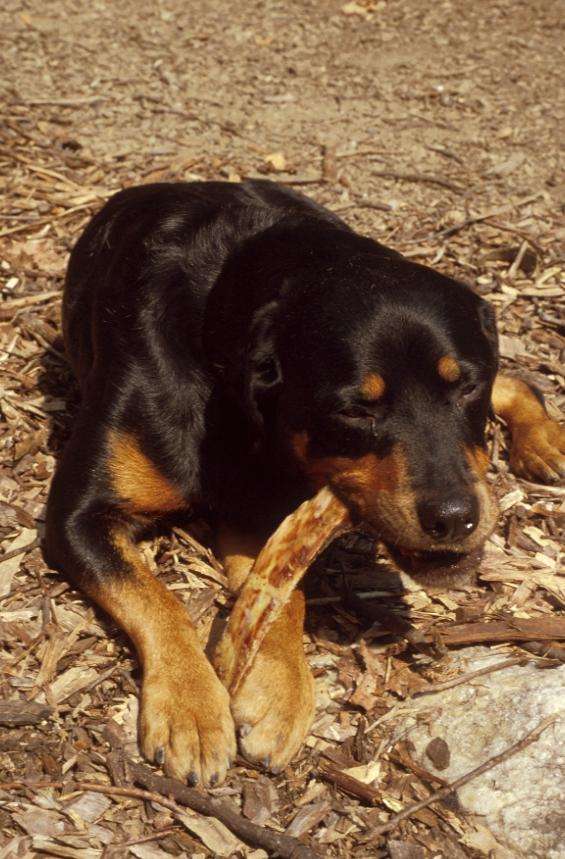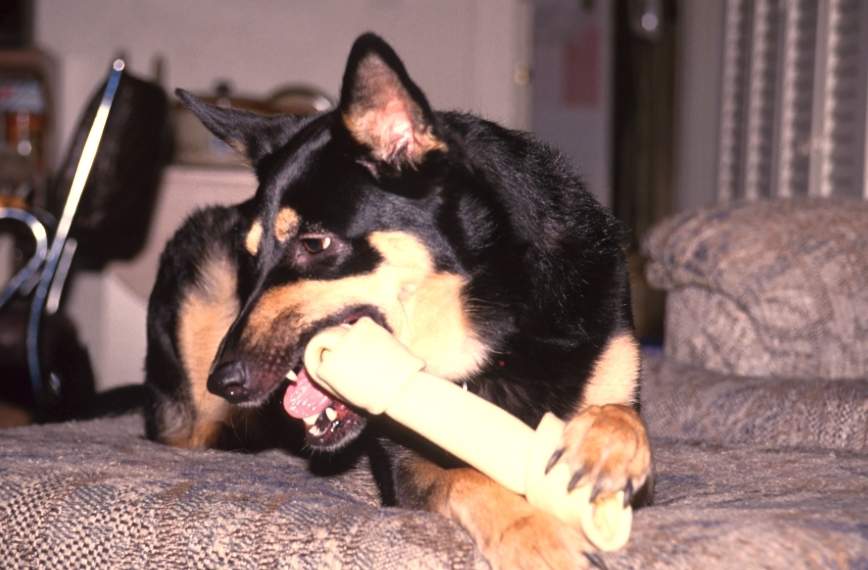Most common characteristics of Resource-guarding
- Occurs most commonly over highly-regarded food resources such as red bones and raw-hide chews.
- Dogs with this behaviour usually ‘vacuum’ food from the bowl.
- When challenged for food they stiffen, develop a fixed gaze and often wrinkle their muzzle while growling.
- Aggression can be relentless and mindless in serious cases.
- It can occur when companion dogs are left alone during the day and when one finds a resource. It can be serious or fatal in these circumstances.
- It is directed towards dogs and/or to people.
- Dogs can protect the area in which they are fed in the absence of food.
- Mostly, the problem disappears within seconds of the food being removed.
- Punishment training often makes this worse.
- Training to ‘not bite’ food around the food bowl can make the behaviour much worse.
Resource-guarding can occur in association with non-food items as well, such as a favoured toy. For some reason, Poodles and Cocker Spaniels seem to resource-guard tissues.
This aggression can be seen towards humans (commonly towards children) and can be seen between dogs

When the owners are not home, resource-guarding aggression can create serious and fatal injuries if one dog finds a bone in the garden.
Another problem with resource-guarding aggression is that because owners usually punish dogs over the aggression, the dog develops food-related anxieties and may then be reluctant to eat his or her food. This is because the dog is ‘predicting the doom of punishment’ that has been linked to food consumption in the past.

Remedies for Resource-guarding aggression
The most important first step is to totally eliminate the resources that cause the aggression. That means not buying bones and rawhide items when you go shopping.
The benefits of bones and rawhide items can be provided in other, safer ways.
For dogs that resource-guard non-food items, the remedies are more complex.
Punishment-based training usually makes this behaviour worse and is best avoided.
